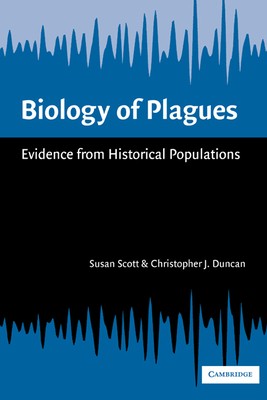
- We will send in 10–14 business days.
- Author: Susan Scott
- Publisher: Cambridge University Press
- ISBN-10: 0521017769
- ISBN-13: 9780521017763
- Format: 15.5 x 22.9 x 2.8 cm, minkšti viršeliai
- Language: English
- SAVE -10% with code: EXTRA
Reviews
Description
The threat of unstoppable plagues, such as AIDS and Ebola, is always with us. In Europe, the most devastating plagues were those from the Black Death pandemic in the 1300s to the Great Plague of London in 1665. For the past 100 years it has been accepted that Yersinia pestis, the infective agent of bubonic plague, was responsible for these epidemics. This book combines modern concepts of epidemiology and molecular biology with computer-modeling. Applying these concepts to the analysis of historical epidemics, the authors show that they were not, in fact, outbreaks of bubonic plague. Biology of Plagues offers a completely new interdisciplinary interpretation of the plagues of Europe, and establishes them within a geographical, historical, and demographic framework. This fascinating detective work will be of interest to readers in the social and biological sciences, and lessons learned will underline the implications of historical plagues for modern-day epidemiology.
EXTRA 10 % discount with code: EXTRA
The promotion ends in 23d.14:47:36
The discount code is valid when purchasing from 10 €. Discounts do not stack.
- Author: Susan Scott
- Publisher: Cambridge University Press
- ISBN-10: 0521017769
- ISBN-13: 9780521017763
- Format: 15.5 x 22.9 x 2.8 cm, minkšti viršeliai
- Language: English English
The threat of unstoppable plagues, such as AIDS and Ebola, is always with us. In Europe, the most devastating plagues were those from the Black Death pandemic in the 1300s to the Great Plague of London in 1665. For the past 100 years it has been accepted that Yersinia pestis, the infective agent of bubonic plague, was responsible for these epidemics. This book combines modern concepts of epidemiology and molecular biology with computer-modeling. Applying these concepts to the analysis of historical epidemics, the authors show that they were not, in fact, outbreaks of bubonic plague. Biology of Plagues offers a completely new interdisciplinary interpretation of the plagues of Europe, and establishes them within a geographical, historical, and demographic framework. This fascinating detective work will be of interest to readers in the social and biological sciences, and lessons learned will underline the implications of historical plagues for modern-day epidemiology.


Reviews